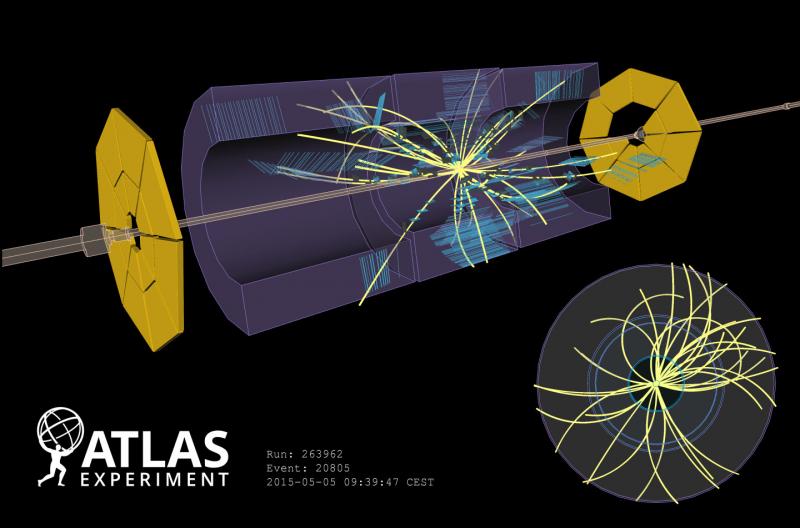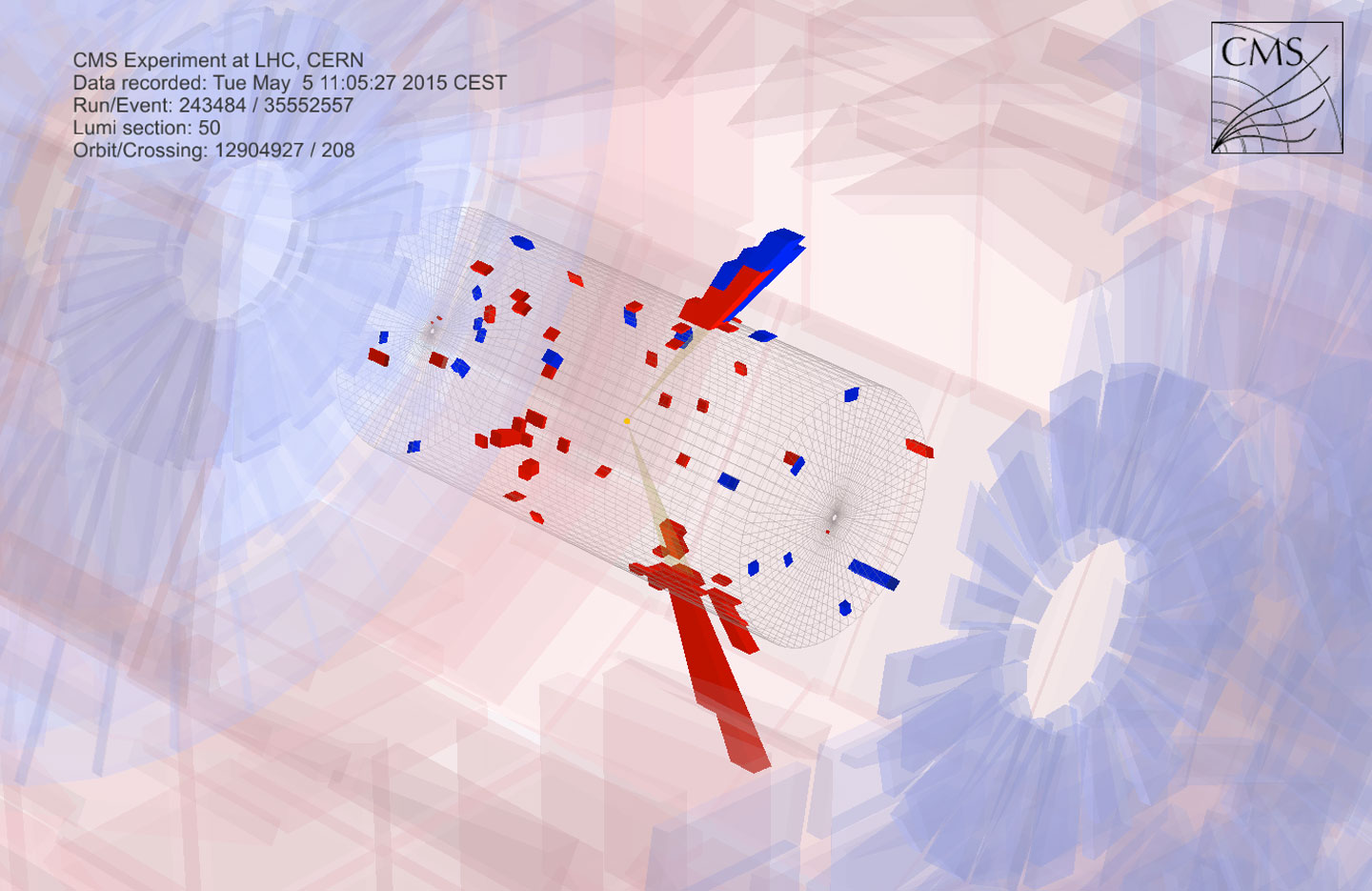At about half past nine CET this morning, for the first time since the Large Hadron Collider (LHC) started up after two years of maintenance and repairs, the accelerator delivered proton-proton collisions to the LHC experiments ALICE, ATLAS, CMS and LHCb at an energy of 450 gigaelectronvolts (GeV) per beam.
These collisions, which take place with each beam at the so-called injection energy, that is, the energy at which proton beams are injected into the LHC from the Super Proton Synchrotron, enable the LHC experiments to tune their detectors. This process is also an important step towards readying the accelerator to deliver beams at 6.5 teraelectronvolts (TeV) for collisions at 13 TeV.
Each low-energy collision sends showers of particles flying through an experiment's many layers. The experimental teams can use this data to check their subdetectors and ensure they fire in the correct place at the precise instant that a particle passes. Reconstructing flight paths of the particles from many parts of the detector at once helps the experiments to check the alignment and synchronization of various subdetector elements.

So just as the LHC team tests each component, system, and algorithm one after the other, the experiments go through checklists that confirm that everything is fully functional and no mistakes, bugs or failures are present when collisions are delivered at 13 TeV.
Meanwhile the LHC Operations team is halfway through its eight weeks of scheduled beam commissioning, during which the accelerator's many subsystems are checked to ensure that beams will circulate stably and in the correct orbit. Sensors and collimators around the accelerator's full 27 kilometres send information to the CERN Control Centre, from where the operators can remotely adjust the beam by fine-tuning the positions and field strengths of hundreds of electromagnets.

Though the first beam at 6.5 TeV circulated successfully in the LHC last month, there are many more steps before the accelerator will deliver high-energy collisions for physics to the LHC experiments. Well before the full physics programme begins, the LHC operations team will collide beams at 13 TeV to check the beam orbit, quality and stability.


